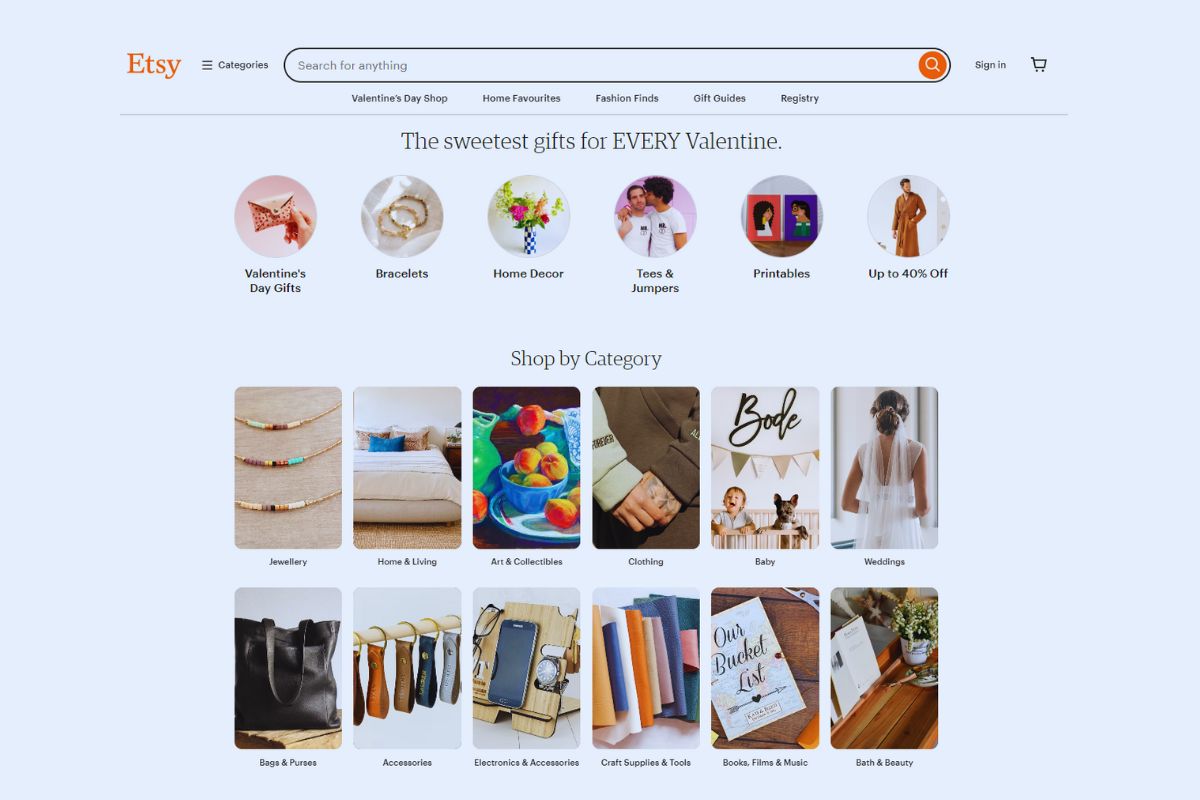Etsy has emerged as a powerful online marketplace for artists, crafters, and vintage collectors aiming to monetize their creativity and passion. By leveraging the platform’s expansive reach, you can tap into a global customer base eager for unique, handmade, and personalized items. To start making money on Etsy, it’s crucial to understand the nuances of the platform and set up a shop that stands out amidst the competition. With commitment and strategic planning, turning your Etsy store into a lucrative endeavor is within reach.
Developing a strong brand identity and understanding your target audience are foundational steps in creating a successful Etsy business. Crafting a cohesive shop aesthetic, combined with high-quality product photography and compelling item descriptions, can significantly boost your store’s appeal. Additionally, familiarizing yourself with Etsy’s search algorithm and utilizing SEO can improve your shop’s visibility, increase traffic, and drive sales. By focusing on these key aspects, you can build a robust online presence and start generating income from your handmade or vintage offerings on Etsy.
Setting Up Your Etsy Shop
Establishing a successful Etsy shop hinges on a solid foundation, focusing on a well-thought-out plan and a clear understanding of the costs involved. Your shop name and story help create a unique brand, while your policies ensure smooth transactions.
Creating a Business Plan
Identify your niche, calculate your profit margin, and forecast potential sales to create a robust business plan. This plan acts as a roadmap, guiding your decisions and helping you navigate the complexities of online selling.
Choosing Your Shop Name

Your shop name should be memorable and reflect your brand. It’s the first interaction potential customers have with you, so choose a name that conveys the essence of your creativity and what you’re selling.
Understanding Etsy’s Fees
Familiarize yourself with Etsy’s fees which include a listing fee, transaction fee, and payment processing fee. These fees are essential to consider as they impact your pricing strategy and overall profit.
| Fee Type | Cost |
| Listing Fee | $0.20 per item |
| Transaction Fee | 5% of the sale |
| Payment Processing | Varies by country |
Crafting Your Shop’s Story
Articulate your journey to becoming an Etsy seller and the passion behind your products in your shop’s story. This narrative not only engages customers but also helps your shop stand out amongst thousands of Etsy sellers.
Setting Up Shop Policies
Clearly state your policies regarding shipping, returns, and customer service. Well-defined policies set proper customer expectations and can help in reducing disputes and ensuring a smooth Etsy shop operation.
Remember, as an Etsy shop owner, your attention to detail in setting up your shop sets the stage for future sales and customer interactions.
Product Development

In the journey to make money on Etsy, product development plays a crucial role. By finding your niche, sourcing quality materials, and crafting exceptional handmade products, you position yourself well within a competitive marketplace.
Finding Your Niche
Identify a niche that resonates with your skills and creativity. Research current trends, competition, and customer demands to find a unique space that aligns with your passion. Whether it’s handmade goods, vintage items, or craft supplies, choose a domain where your products will stand out. By focusing on a niche, your shop will attract customers looking for your specific creations.
Sourcing Materials and Supplies
The quality of your handmade products greatly depends on the materials and craft supplies you use. Prioritize suppliers that offer high-quality, sustainable, and affordable resources. This might include local artisan markets or eco-friendly online vendors. Keep track of your inventory with a list:
- Eco-friendly wool for knitwear
- Upcycled vintage fabrics for unique clothing pieces
- High-grade beads and metals for jewelry making
Creating Quality Handmade Products
Your success on Etsy is tied to the quality and creativity of your handmade products. Utilize your art skills to create items that not only reflect exceptional workmanship but also convey your artistic vision. To ensure customer satisfaction and repeat business, perform quality checks and continuously refine your techniques. Vintage sellers must ensure the authenticity and condition of their items are accurately represented. Remember, the presentation can set you apart, so invest time in high-quality photos and compelling product descriptions.
Listing and Marketing Your Products

Creating successful listings on Etsy involves more than just putting your products online. You need to master the art of presenting your creations with effective listings, optimize them for Etsy’s search algorithm, and promote them across various social media platforms to increase your visibility and sales.
Crafting Effective Product Listings
Your product listings are the cornerstone of your Etsy business. Start by using descriptive titles that not only catch attention but also include relevant keywords for search engines. Write compelling descriptions that provide all necessary details like size, materials, and usage while incorporating keywords naturally. List your items in the correct categories to help buyers find your products more easily.
Taking High-Quality Product Photos
Quality photography is key to showcasing your items. Your product photos should be well-lit, focused, and depict your item accurately from multiple angles; consider including an image for scale. Utilize natural light if possible or invest in good lighting equipment to ensure your products look their best.
Researching Relevant Keywords
Incorporate relevant keywords into your listings to improve visibility in both Etsy’s and external search engines. Use the Etsy search bar to explore common search terms, and look at similar and successful listings for keyword inspiration. Make sure these keywords are present in your titles, tags, and descriptions.
Leveraging Etsy SEO
Enhance your Etsy SEO by optimizing your product titles, tags, and categories. Your titles should lead with the most critical keywords. Use all 13 tag opportunities to include a mix of both broad and niche-specific keywords. Remember that Etsy’s search results favor listings that provide a great customer experience, so aim for high-quality listings and a prompt response to customer inquiries.
Promoting Your Products on Social Media
Social media is a powerful tool for marketing your Etsy shop. Create business profiles on platforms like Facebook and Instagram, and share your products using appealing visuals and engaging captions. Use hashtags to increase the reach of your posts. Consider also running targeted advertisements or sharing behind-the-scenes content on a blog to build a community around your brand.
By focusing on these key aspects of listing and marketing on Etsy, you’ll enhance your shop’s ability to attract more traffic and ultimately increase sales.
Enhancing Your Storefront
Your success on Etsy is highly influenced by how appealing and professional your storefront appears to potential customers. The key to making money on Etsy is to effectively showcase your products through strong visual branding, excellent customer relations, and unique service offerings that set you apart from competitors.
Creating a Cohesive Visual Branding
Your branding should communicate your store’s identity at a glance. Use consistent product photography to make your listings stand out. For clothing and accessories, consider using a plain background to highlight the items. Handmade jewelry should be photographed up close to capture detail. Tools like Canva can help create a professional-looking banner and shop icon that align with your brand’s color scheme and aesthetic. The goal is to make your storefront instantly recognizable.
Developing Customer Relations
Customer service is a cornerstone of your business. Regularly engage with your customers by responding promptly to messages and addressing concerns. Build your customer base by requesting feedback and featuring it prominently on your storefront. Personal touches, such as a thank-you note in the package, can turn a one-time buyer into a repeat customer.
Offering Special Services
Offering additional services can increase perceived value. Gift wrapping, for example, attracts buyers looking for presents. Provide options for custom orders, especially for accessories and handmade jewelry, inviting customers to be part of the creative process. These services make your shop more appealing and can lead to positive reviews and higher customer retention.
Managing Your Etsy Business

Running a successful Etsy business involves meticulous management of various aspects such as order processing, pricing, taxes, tracking success, and exploring growth opportunities. Mastering these elements is key to ensuring your business thrives in the competitive online marketplace.
Handling Orders and Shipping
Efficiently handling orders and shipping is imperative to maintain customer satisfaction and encourage repeat business. Establish a system for order fulfillment that includes timely processing, accurate shipping details, and reliable tracking information. Additionally, consider offering multiple shipping options to cater to different client needs.
Setting Competitive Prices
Your pricing strategy should reflect the quality of your products while remaining competitive within the market. Calculate your costs, including materials and labor, and factor in a profit margin that aligns with your business goals. Regularly review your prices to stay competitive and profitable.
Understanding Taxes and Revenue
Being aware of your tax obligations is crucial for running a legitimate enterprise. Keep detailed records of all sales and expenses to simplify tax filing. Understand how revenue from your shop will impact your personal tax situation, and consult with a tax professional if necessary.
Tracking Your Shop’s Success
Measure your shop’s performance by tracking sales, traffic, and customer feedback. Tools like Etsy’s own analytics can help you understand where your visitors are coming from and which products are most popular, guiding you to make data-driven decisions to enhance your shop’s success.
Scaling Your Business
When ready to scale your business, analyze which products are most profitable and consider increasing their availability. Additionally, improving shop processes and customer service can lead to more sales and a larger customer base. Also, expanding your product line can attract a wider audience.
Exploring Additional Sales Channels
Don’t limit your sales to Etsy alone. Explore additional channels such as Facebook, Instagram, or your own blog to increase visibility. Multichannel selling can drive more traffic to your Etsy shop and grow your brand presence across the web.
Utilizing Etsy’s Seller Handbook
Etsy provides a comprehensive Seller Handbook which is a valuable resource for active sellers to learn best practices and insightful tips for shop management. Be sure to review the handbook regularly to keep your knowledge up-to-date and implement Etsy’s recommended strategies.
Considering Etsy’s Paid Advertising
Investing in Etsy Ads can enhance your shop’s visibility and attract more traffic. Determine if Etsy’s advertising options align with your marketing goals and budget, and track the performance of your ads to ensure a positive return on investment.
Managing your Etsy business with attention to these key areas can help you build a stable and successful online presence. Stay informed, adapt to changes, and always prioritize the customer experience to foster growth and profitability.
Expanding Product Offerings

Expanding your range of products on Etsy can enhance your shop’s appeal and capture a broader audience. Integrating digital downloads and exploring new product categories can invigorate your store’s inventory with minimal overhead costs.
Adding Digital Downloads to Your Shop
Introducing digital downloads to your Etsy shop offers a cost-effective way to diversify your products. As a seller of handmade or vintage items, consider how your creativity can translate into digital products.
- Artwork and Printable Goods: Offer your unique designs as downloadable art prints, greeting cards, or planners.
- Patterns and Tutorials: If you specialize in crafting or DIY, sell patterns for clothing or home decor, or step-by-step guides for making accessories or toys.
- Educational Materials: Create and sell lesson plans, worksheets, or learning games that cater to a variety of age groups and interests.
These downloads eliminate shipping costs and allow for unlimited sales of a single product. Services like Printify can also facilitate a print-on-demand model, linking your designs with a range of physical products without needing to hold inventory.
Exploring New Product Categories
Venture into new categories by assessing trends and demands within the Etsy marketplace. Diversify your offering by incorporating:
- Handmade Collectibles: Leverage your skills to craft limited edition collectibles that could become sought after.
- Eco-Friendly Materials: Tap into the growing trend for sustainability by using recycled or eco-friendly materials in your products.
- Stickers and Accessories: These are great for print-on-demand services and often enjoy high demand due to their versatility and appeal as affordable gifts.
Evaluate existing skills and how they can apply to new categories like accessories, clothing, home decor, or even toys. Always stay true to your brand’s aesthetic and ethos, as this consistency is key to retaining your audience while reaching out to new customers.
Growing Your Customer Base

Expanding your customer base on Etsy involves strategic engagement and building an online presence to attract and retain buyers. By focusing on consistent branding, community involvement, and providing excellent customer service, you can develop a loyal following that contributes to your shop’s success.
Cultivating an Online Presence
Your Etsy storefront is just the beginning. To capture the attention of potential buyers, establish a strong online presence across various platforms. Create a cohesive brand identity on social media channels such as Facebook and Instagram. Use high-quality images and engage with shoppers through posts and stories. A blog can also provide valuable content that drives traffic to your Etsy shop.
Engaging with Your Community
Interaction is key to building a community around your brand. Participate in Etsy Teams, connect with other entrepreneurs, and collaborate to expand your reach. Respond to customer inquiries swiftly and consider their feedback. Hosting giveaways or joining Etsy’s promotional events can further amplify your visibility within the Etsy community.
Optimizing for Repeat Business
Convert first-time buyers into repeat customers by ensuring a memorable shopping experience. Implement best practices for customer service—package orders with care, include personalized thank-yous, and handle any issues promptly and professionally. Encouraging feedback and maintaining a high seller rating can solidify your shop’s reputation for future customers, leading to increased loyalty and order frequency.
Evaluating Performance and Setting Goals
To effectively make money on Etsy, it’s crucial to understand how to evaluate your shop’s performance and set realistic yet ambitious goals. The right use of analytics can guide your strategy adjustments and help establish clear milestones for sustainable business growth.
Using Analytics to Monitor Shop Activity
Leverage Etsy’s built-in analytics tool to track daily shop activity. This feature allows you to see detailed data on traffic, sales, and customer engagement. Pay close attention to your profit margin over time; this will highlight the products that are both popular and profitable. Use the information to spot trends and plan inventory accordingly.
Adjusting Strategies for Increased Profitability
Once you have a grasp of your shop’s analytics, adjust your strategies to boost profit. If certain items are underperforming, consider optimizing their listings or running promotions. Regularly review your profit margins and revenue against your expenses; this helps you identify where costs can be cut without compromising on quality. Experiment with pricing strategies and marketing tactics to find what resonates with your audience while keeping an eye on the bottom line.
Setting Milestones for Business Growth
Setting milestones is a methodical way to achieve growth. Break your larger goals into small, measurable steps. For example, if your aim is to double your revenue within a year, set quarterly sales targets. Keep your objectives SMART: Specific, Measurable, Achievable, Relevant, and Time-Bound. These targets will serve as your roadmap, helping you stay focused and motivated.
By consistently monitoring analytics, fine-tuning your strategies for improved profitability, and setting clear milestones, you can elevate your Etsy shop from a creative outlet to a thriving business.
Frequently Asked Questions
Navigating the world of Etsy can be both exciting and overwhelming. To boost your chances of success, it’s important to understand the nuances of pricing, visibility, digital product sales, and marketing, especially for printables, as well as foundational steps for new sellers and insights into what makes top sellers thrive.
What are the best practices for setting competitive prices for products on Etsy?
To set competitive prices on Etsy, you need to calculate your costs, understand your market, and evaluate your unique value proposition. It’s essential to cover materials, labor, and overhead while also considering the going rates of similar products.
What strategies can be employed to maximize visibility and sales in Etsy’s top categories?
Maximizing visibility and sales involves utilizing Etsy’s SEO, engaging with the Etsy community, offering promotions, and utilizing Etsy ads. It’s also important to continuously refine and optimize your product listings based on customer feedback and trends.
Can you generate income on Etsy by selling digital products, and what are the steps to get started?
Yes, digital products are a lucrative option on Etsy due to low overhead costs and the potential for passive income. To get started, create unique digital content, set up your Etsy shop, and ensure your listings are visually appealing and SEO-friendly.
What are the key marketing techniques to increase sales for Etsy printables?
For Etsy printables, focus on identifying a niche market, creating high-quality and customizable content, and leveraging platforms like Pinterest and Instagram for marketing. Developing a strong brand can help your printables stand out.
How can a new seller establish a successful Etsy shop with minimal upfront investment?
New sellers can focus on digital products or small batch items to minimize costs. Start with thorough market research to understand demand and use social media for initial marketing efforts, harnessing the power of word-of-mouth.
What are the common factors that contribute to the success of top-earning Etsy sellers?
Top-earning Etsy sellers typically offer unique, high-quality products, have exceptional customer service, understand the importance of branding, and actively learn from customer feedback and market trends. Strong SEO practices and consistent shop updates also play a significant role.



